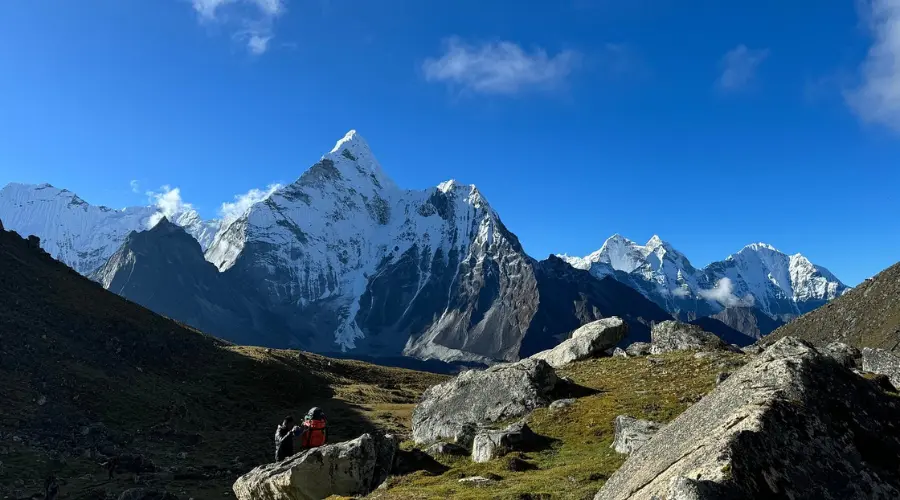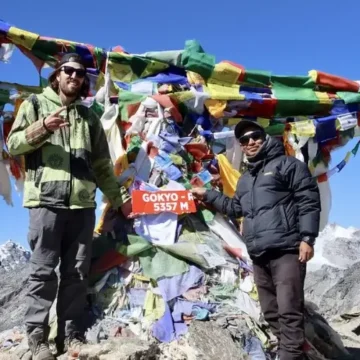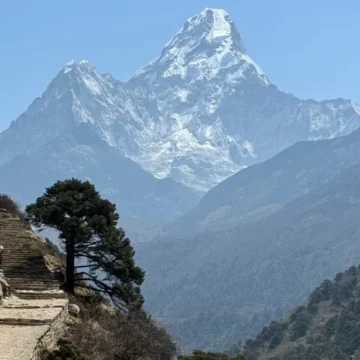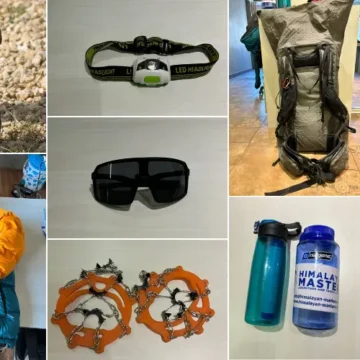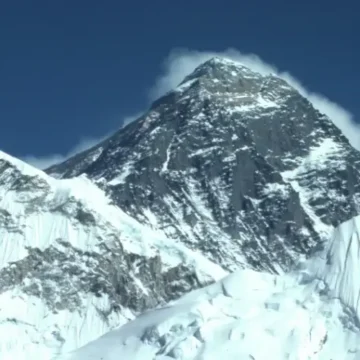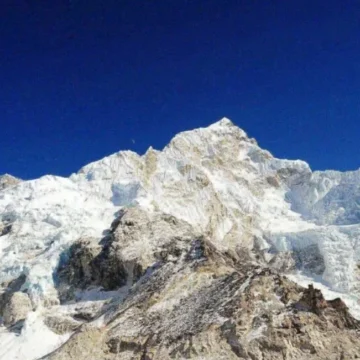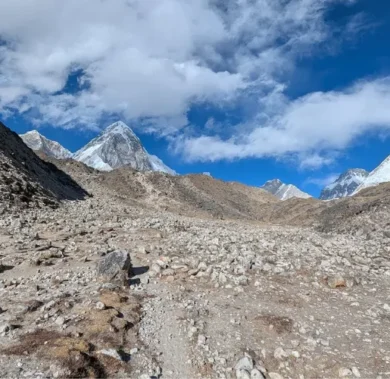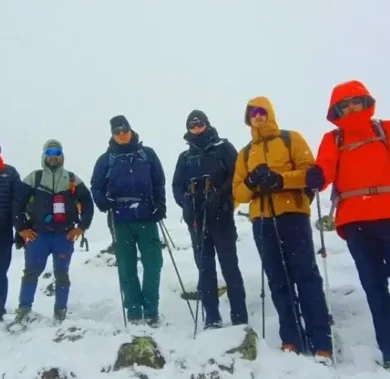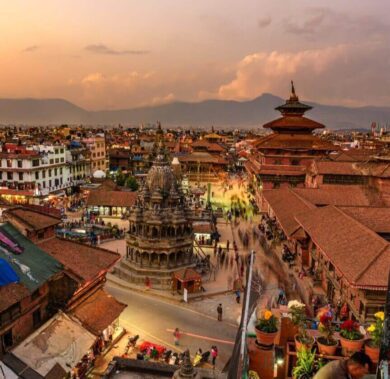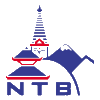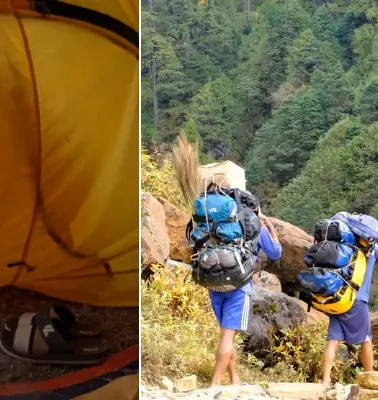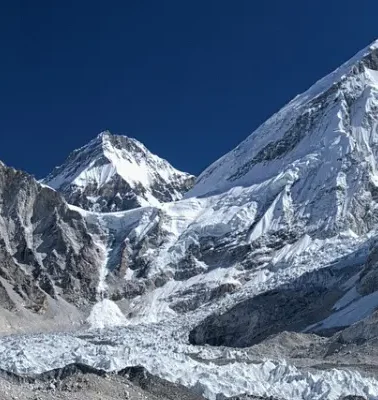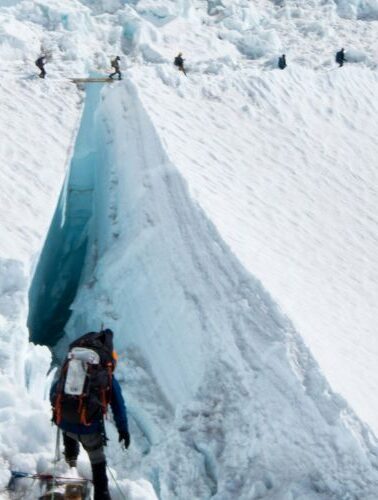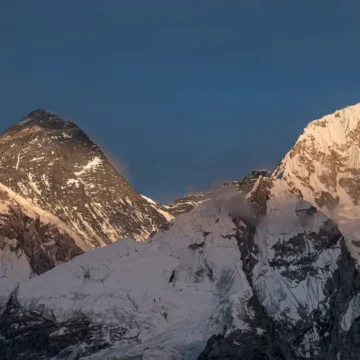
How to Read Weather Patterns During Three Passes Trek?
Table of Contents
Ok, now that you have decided to go on one of the most thrilling journeys of your life, the Everest Three Passes Trek. In the heart of the Himalayas, where the wind speaks louder than words, and the weather shifts unpredictably. Under such conditions, being able to read Everest Three Passes Trek Weather isn’t just a skill; it’s a survival skill.
It is a high-altitude trek, reaching above 5000 meters, where the environment can change faster than your pace. So, it’s essential that you understand subtle changes in cloud patterns, wind directions, and temperature.
Having such skills can make your Everest Three Passes Trek good to great.
The Three Passes Trek weather is one of the most challenging parts of the trek. Even a slight misreading can be dangerous. However, with a trained guide, even a solo trekker can complete the trek successfully.
So, if you are not advanced, we advise you to learn basic cloud patterns and keep updated on Everest weather. Learn how to observe, interpret, and take action accordingly.
Key Signs to Watch on the Trail
When trekking in the Himalayas, even the slightest skill to read weather signals can save you from unwanted accidents. You never know when the high winds, rain or snow can halt your trek.
Here are some of the signs that you can learn and decide what to do next.
Cloud Patterns
Lenticular Clouds: If you ever see these lens-shaped clouds near Everest or the nearby passes, it usually indicates strong wind or an incoming storm. Avoid pass crossings if they persist all day.
Billowing Cumulus: Puffy, growing clouds in the afternoon indicate probable showers, thunderstorms, or snow. It’s best to descend if these clouds thicken.
Low Fog Around Passes: If there is thick fog or mist early in the morning around high passes like Kongma La, the visibility becomes quite low. Crossing passes under such conditions is risky on the Three Passes Trek, especially without a guide.

Clear Stars at Night: A clear night sky, bursting with stars, indicates good weather the following day. However, if you notice a halo around the moon, it could indicate moisture in the upper atmosphere, and a storm may follow within 24–48 hours.
Wind Behaviour
Usually, around midday, the winds are strong. So, we advise you to start trekking early. And if the winds are strong or colder, chilly in the mornings, it signals a change in pressure systems.
Likewise, if you experience any sudden gusts of wind through valleys, especially before Cho La or Kongma La, it’s a warning sign that the weather front is arriving soon.
Always pay attention to how trees sway or how your clothing flutters—even subtle changes matter.
Temperature and Altitude Warnings
In the high Himalayas, temperature doesn’t just affect your comfort; it also influences oxygen level, ice conditions, and risk of avalanches.
Even during peak trekking seasons in Everest (spring and autumn), the temperature can drop below -15°C. Especially at high altitude passes, above 5000 meters (16,404 ft), being exposed for a longer duration could be fatal. It can cause frostbite, hypothermia, and even altitude sickness.
If you spot frost formation by mid-afternoon or if the water bottle starts to freeze early in the morning, it suggests that the night could be extremely cold. Be cautious of ice-covered trails the next morning.
Signs to watch:
- Ice crystals forming on tents or hair
- Hardening of snow underfoot indicates the potential for slippery passes
- Breathing becomes heavier than usual—this could be a mix of altitude and cold-induced pressure drops

Seasonal Weather Considerations
Let’s understand the Everest Three Passes Trek weather month by month for better route planning.
| Month | Weather Pattern Summary |
| January | Even days are colder, with temperatures around 8°C, and nights are even colder, around -15°C. Usually clear blue sky. If it snows, it continues for several days. |
| February | Blue sky, chilly winds, and frequent heavy rainfall. Very cold; day temperature 10-12°C, and night temperature -12-15°C. |
| March | Cold mornings and nights, with temperatures ranging around -10°C, but stable weather. Snow from winter may still block Cho La. |
| April | Usually, clear weather, but it can become windy and cloudy at any moment. Day temperature can reach up to 15°C. |
| May | Warmer, clearer days. However, the nights can be chilly, with temperatures dropping below 0°C. Great visibility. Winds pick up late afternoon. |
| June | Monsoon season. Expect heavy rain, fog, and poor visibility. |
| July | Normally foggy and persistent drizzle. Day temperature ranges around 15-20°C, while nights and mornings are colder (0-5°C). |
| August | Although usually foggy in the mornings, on clear days, trekkers can enjoy lush forests coloured with the different colours of rhododendrons. The treeline can be seen until Pangboche. |
| September | September mornings are still cooler, with temperatures around 1-2°C, while day temperature reaches around 14°C. Clear, blue sky. |
| October | Peak trekking season. Chilly nights, bright days. Ideal month for the Three Passes Trek Nepal experience. Rare snowfall. |
| November | Day temperatures range around 10-12°C. Meanwhile, morning temperature passes crossing, the temperature can drop below -10°C. Snow risk increases. Watch out for frost-covered trails. |
| December | Extreme cold, strong wind, and closed lodges. Only for expert trekkers or guided groups. Clear morning and day, but the evenings could be snowy. Day temperature is around 9°C, and the night is around -9°C. |
Using Tools to Read Weather
While human instinct is valuable and generally correct, using modern tools can give clarity. Here are some tools to read the weather while on the trek.
Barometers (Altimeter Watches): A sudden drop in pressure means a storm is likely. Slow, steady drops could mean incoming light snow or clouds.
Satellite Phones with Forecast Access: Some apps (like Windy and WeatherPro) offer accurate high-altitude forecasts.
Offline GPS Maps (Map of Three Passes Trek): Apps like Maps.me or Gaia GPS help track progress and see topographic challenges that may be impacted by weather.
Note: Always download the updated map of Three Passes Trek or carry a physical map before your journey. Knowing where exposed ridges or glacier crossings lie helps with quick decision-making.
Read More: How to Use a Map and Compass on Remote Trails of Nepal?
Decision-Making in Bad Weather
Never “push through” a pass in bad weather. Instead:
- Turn back if fog covers trail markers, or footprints disappear. Whiteout conditions near passes like Cho La or Kongma La can be deadly.
- Avoid crossing passes or high-altitude regions during snowfall or high winds.
- Seek shelter or wait a few hours at teahouses if bad weather persists or the route gets blocked. Most stops, such as Dzongla or Gokyo, are safe resting points.
- If trekking alone (Three Passes Trek solo), make extra conservative calls. Don’t always rely on weather forecasts and tools, as weather can change in the mountains within an hour.
- Connect with fellow trekkers en route and share updates. Locals and lodge owners often have accurate forecasts.
- Always carry safety essentials such as an emergency bivy or thermal blanket, a fully charged power bank, and a satellite communicator.
- Listen to your teahouse’s owner’s advice; they have better instincts than digital forecasts.
- No summit or pass is worth your life. Delay or cancel the trip if needed. The mountains will still be there tomorrow.

Pro Weather Tips for Trekker
Navigating the Three Passes Trek weather isn’t just about walking or stunning views. It’s more about living in the moment. Here’s how you can overcome weather challenges during the trek. A pro trekker is always attentive and one step ahead of whatever the Himalayas have to offer.
- The weather between 5 am and 10 am is mostly stable. So, we usually cross high passes early in the morning.
- Keep hydrated. Drink at least 3-4 litres of water daily. Cold dehydrates you quickly and makes you sluggish.
- Always check the night sky. A clear night sky indicates good weather the next morning.
- Wear bright clothing. Helps you stay visible in low-visibility zones.
- Rest at every safe point. Acclimatization isn’t just for altitude; it helps you read the trail better when well-rested.
- Learn how to read barometric pressure. Sudden pressure drops often suggest snowfall or windstorms.
- Learn what cloud pattern indicates the weather.
- Instead of just one thick cloth, wear layers so that you can adjust according to the weather. If trekking in winter, extra planning for the Everest Three Passes is required.
- Keep your socks dry. Dry socks mean warm feet. Pack extra socks.
- Keep extra days on hand. You might need to customise your itinerary and need to extend the trek due to bad Everest Three Passes Trek weather.
- Always listen to your guide. They are well-trained and know about the terrain and weather. In case of an emergency, our guides are trained for rescue missions.
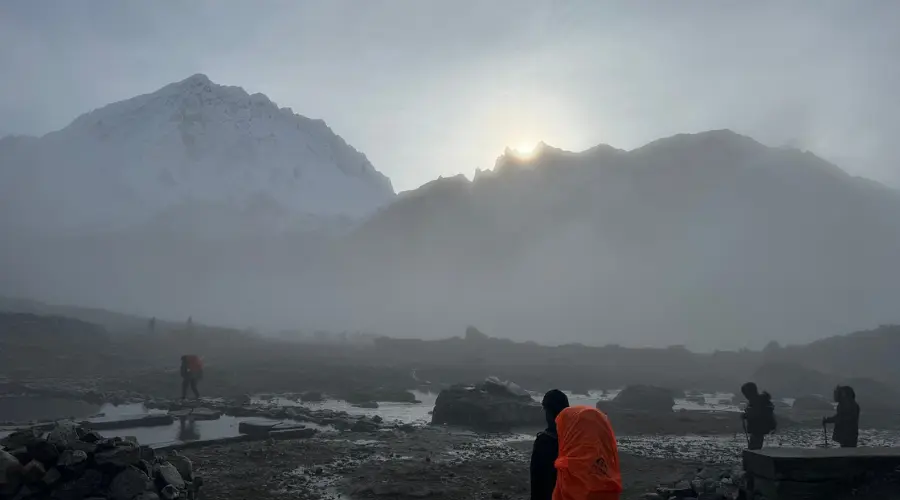
How to “Feel” the Weather Without a Forecast
Ask any trekkers who have spent years in the mountains, and most of them will probably answer the same about their “feeling” of the weather:
- Listen to the silence. If birds vanish and the wind dies suddenly, it’s often a sign of an incoming storm.
- Smell the air. A damp, earthy scent rising from the ground can signal pre-monsoon moisture.
- Feel the ground. If snow feels softer or waterlogged mid-morning, expect post-lunch cloud build-up.
- Watch animals. Yaks huddling together, dogs seeking cover—these are instincts you can trust.
- Monitor your breathing. If you suddenly feel more breathless than expected (without gaining elevation), it might be a drop in air pressure, often a sign of weather change.
- Check the sun’s halo. A faint ring around the sun or moon often points to high-altitude ice crystals—an early warning for snow or rain within the next day or two.
- Observe cloud movement. Fast-moving clouds or sudden changes in direction often suggest a front is moving in. If clouds start building from the east, bad weather may come sooner than expected.
Want to know more?
Speak to an Expert





Sandip Dhungana
Nepal 🇳🇵
Whatsapp: +977-9823636377

